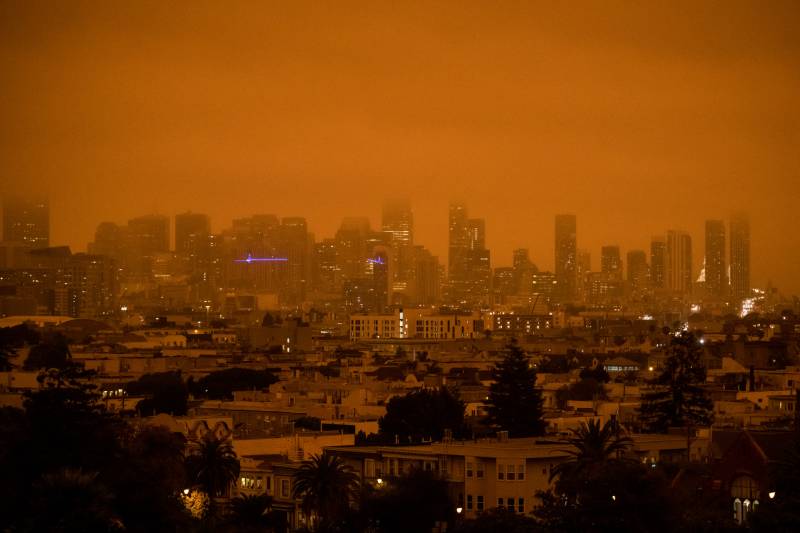While 2020’s wildfires posed an especially urgent need to get masks into the community, Redwoods said the work is just as crucial this year.
“We encourage our volunteers to step forward, experience the energy and healing that can come from being actively engaged, but also recognize that we have to be in a rhythm of taking time and care and recovery,” Redwoods said. “Abundance comes from collective power, and that’s the solution to so many of these issues.”
If you are unhoused or work outdoors, here are some ways to attempt to stay safe:
How to protect yourself from wildfire smoke if you can’t stay inside
The Centers for Disease Control and Prevention say the best way to reduce your risk of being affected by wildfire smoke is to seek shelter if possible. But if you must be outside, try to limit your physical activity and wear a mask if it’s possible and safe to do so.
Remember: Although cloth masks can help prevent the spread of COVID-19, they won’t protect against the harmful particles in smoke that can be dangerous for your health. An N95 mask is the best way to protect yourself against wildfire smoke. In the Bay Area, connect with Mask Oakland; in the Sierra, connect with Black Lives Matter El Dorado County or Help Sierra Breathe.
More information on protecting yourself from toxic wildfire smoke.
For help — or to help — contact an organization or mutual aid network
Here’s a list of Bay Area organizations doing on-the-ground work where you can get help or donate your time, money or supplies:
- California Farmworker Foundation created a rent relief fund for farmworkers and collects data from communities to determine which services they need.
- Common Humanity Collective is a mutual aid group of UC Berkeley scientists, activists, community leaders and “conscious neighbors.”
- Community Ready Corps provides a variety of community supports from food drives to neighborhood safety services in Oakland.
- Corazón Healdsburg provides disaster relief to vulnerable families in northern Sonoma County.
- Direct Action for Farmworkers is a volunteer-run collective that provides aid for undocumented and mixed-status farmworkers.
- The Disability Justice Culture Club manages a mutual aid network serving the Bay Area’s East Bay.
- The East Oakland Collective provides food and supplies for unhoused communities and other populations who need them.
- The Homeless Youth Alliance does outreach for young unhoused people in San Francisco.
- Mask Oakland began as a grassroots initiative in 2017 to give masks to disabled and unhoused people and others who need them.
- People’s Breakfast Oakland is providing hygiene packs and other resources for Black people experiencing homelessness in Oakland.
- PODER organizes with Latino immigrant families and youth to provide mutual aid for those who need it.
- PureAirOak is collecting funds to buy air purifiers for Oakland residents.
- The Village in Oakland provides supplies and support for local encampments.
Here are some additional ways you can support Bay Area communities:
Serve the community where you live
If you want to help people right now, your own community is a good place to start.
Check in on your neighbors and ask if they’re in need of any assistance or supplies. You might consider doing this virtually — for example, on social media or a platform like Nextdoor. You could also call them or visit in person.

